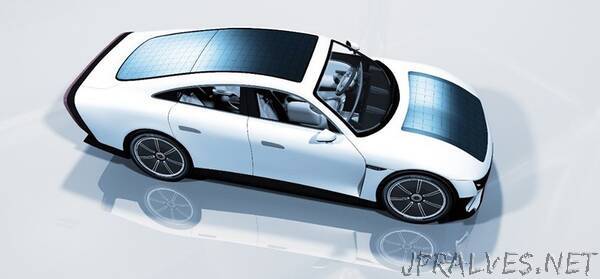
“Researchers at Japan’s Toshiba Corporation (TOKYO: 6502) have announced a significant advance in their work to develop an efficient, low cost and highly reliable tandem solar cell that raises the output of solar panels by layering a transparent solar cell over a standard silicon cell.
Building on their achievements to date, the researchers have reported a transparent cuprous oxide (Cu2O) solar cell with a conversion efficiency (PCE) of 9.5%, the highest level yet achieved for a Cu2O cell (*1). This was realized by enlarging its predecessor, announced in December 2021, and points to the potential for mass production. The new cell is expected to provide a boost for the development of EV that do not require plug-in charging, and to advance other mobility applications, such as high-altitude platform stations, telecom platforms in the stratosphere.
Worldwide promotion of renewables as a mainstream energy supply, and of efforts to electrify transportation, is creating opportunities for solar cells. Toshiba is committed to using its technological capabilities to advance carbon neutrality, and as part of this is developing highly efficient and reliable low cost tandem solar cells that can be mounted on vehicles and trains, which offer only limited installation space.
Tandem cells position a solar cell over a standard silicon cell. The cells generate power at different wavelengths, raising areal output, and have great potential to boost the efficiency of solar modules. In addition to Toshiba’s transparent Cu2O cell, work is being done on two other tandem cell technologies: fabrication with gallium arsenide (GaAs) or other III-V materials (*2); and perovskite crystal thin films. Production costs for the former range from several hundred to several thousand times the cost of a single silicon cell, severely restricting application. The latter cannot yet deliver the necessary reliability and guaranteed output for the 20-years-and-more life of a silicon cell.
Toshiba has estimated that positioning the new Cu2O solar cell over a 25% PCE silicone cell realizes a Cu2O-Si tandem cell with a 28.5% PCE—notably surpassing 26.7%, the highest reported PCE for any standard silicon cell (*3), and close to 29.1%, the highest reported PCE for any GaAs cell.
Under test criteria defined by NEDO, Toshiba found that a one-time charge enables the current Cu2O-Si tandem cell to power an electric vehicle (EV) for 37km, and further improvements in solar cells toward the theoretical maximum efficiency of 42.3% are expected to extend the range to a distance approaching 55km. These are both recognized as practical distances for short trips without recharging, and would reduce charging frequency for longer trip.
Toshiba targets a practical Cu2O-Si tandem cell with a 10% PCE Cu2O cell and an overall PCE of 30%, and the new cell records solid progress to that goal. Looking to mass production, the company is working to enlarge cell size, and has made a prototype with a power generation area of 40mm2 and a PCE around 8% (Figure 6). The efficiency falloff in the larger cell is due to a less uniform layer and Toshiba continues to refine thin film deposition technology for uniform deposition over a larger area.”
